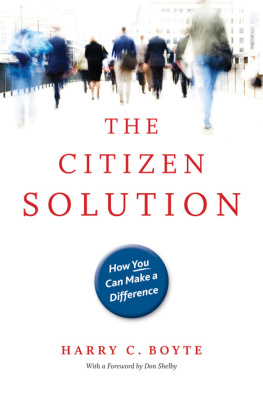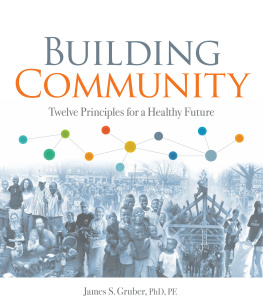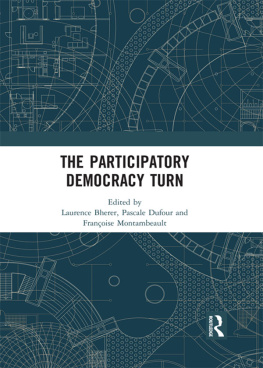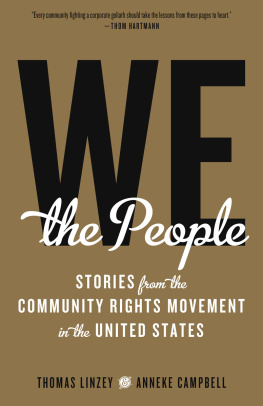
Few people in this country know as much about community building as Jim Diers. The case studies and ideas in this book are extremely powerful evidence that real communities are knit together by the public places they share, and they show how small ideas from ordinary citizens can make an entire city thriving and beautiful.Fred Kent, President, Project for Public Spaces
Seattle's Department of Neighborhoods is widely known as the most innovative effort in the U.S. to empower local residents, and Diers captures the extensive array of strategies and programs devised by his department. This is a very readable account that touches on many of the major challenges facing every city in the country.John P. Kretzmann, co-author of Building Communities from Inside Out
Dozens of towns, cities, and suburbs are replicating the outstanding community-building programs pioneered by Seattle's Department of Neighborhoods. Neighbor Power supplies the inspiration and the techniques for building strong neighborhood communities from the ground up.Judy Corbett, Executive Director, Local Government Commission
Finally, a book sharing the how we did it of Seattle's neighborhoods. Neighbor Power bursts with inspirational ideas, proven in practice, for building community. It is a must read for all students of planning and community development, local government managers and elected officials, and neighborhood leadersin fact, anyone who cares about how we live together and create community.Linda Campbell, Manager for City Council, Shellharbour, Australia
Jim Diers's approach to neighborhood empowerment is gaining popularity in Japan. Thanks to Neighbor Power, we can now put Seattle's programs into action.Yuko Nishimura, Komazawa University, Tokyo
2004 by the University of Washington Press
Third printing, with corrections, 2006
Printed in the United States of America
Designed by Pamela Canell
14 13 12 11 8 7 6 5
All rights reserved. No part of this publication may be reproduced or transmitted in any form or by any means, electronic or mechanical, including photocopy, recording, or any information storage or retrieval system, without permission in writing from the publisher.
University of Washington Press
PO Box 50096, Seattle, WA 98145
www.washington.edu/uwpress
Library of Congress Cataloging-in-Publication Data
Diers, Jim.
Neighbor power : building community the Seattle way/Jim Diers.1st ed.
p. cm.
Includes bibliographical references and index.
ISBN 978-0-295-98444-5 (pbk. : alk. paper)
1. Community developmentWashington (State)Seattle. I. Title.
HN80.S54D53 2004 307.1'4'09797772dc22 2004013595
The paper used in this publication is acid-free and recycled from 20 percent post-consumer and at least 50 percent pre-consumer waste. It meets the minimum requirements of American National Standard for Information SciencesPermanence of Paper for Printed Library Materials, ANSI Z39.48-1984.

Cover illustration (top): Miller Park residents celebrating completion of the Ron K. Bills Fountain. Photo by Ian Edelstein; courtesy City of Seattle.
ISBN-13: 978-0-295-80592-4 (electronic)
The troll is as good a symbol as any of the remarkable neighborhood spirit in Seattle. It's really a tale about ways that our elected city governments can give power back to ordinary people.ELIZABETH AIRD, columnist, Vancouver Sun
ACKNOWLEDGMENTS
My passion for community building comes from the generous support that I have received from the members of my own community. Without them, there would be no Department of Neighborhoods, and I certainly would not have written this book.
Thank you to the members of my workplace community, beginning with the elected officials under whom I served. Mayor Charles Royer, thank you for taking a big chance by hiring me and for insisting that neither the Office of Neighborhoods nor the district councils should become a layer of bureaucracy between the neighborhoods and city government. I am indebted to Mayor Norm Rice for reorganizing the office into a Department of Neighborhoods and retaining me as director; Norm, thank you for helping me understand the importance of Seattle's non-geographic communities and for embarking on the bold experiment in bottom-up planning. I am especially appreciative of Mayor Paul Schell, who understands that government's role should be to support community initiatives; thank you, Paul, for tripling the Neighborhood Matching Fund and for decentralizing city government so that it could follow up on the neighborhoods' plans. None of the mayors could have done anything without a supportive city council; all of the members deserve my gratitude; in particular, thank you to Jim Street, who is the true father of the Department of Neighborhoods, and to Richard Conlin, who followed Jim as the champion of the department and of Seattle's neighborhoods.
The credit for the success of the Department of Neighborhoods belongs to my co-workers. You are truly an amazing group of skilled and dedicated public servants. You walk the talk; every one of you is active in your own communities and, together, you created a richly diverse workplace community that continues to embrace and inspire me. I always felt fortunate to be part of such a wonderful team, but it was not until I was gone from the department that I realized just how dependent I had become. Fortunately, Laurie Dunlap, my administrative assistant, took pity on me and volunteered to do all the initial editing of my manuscript; thank you, Laurie, for your ongoing friendship, advice, and ability to make me seem more literate than I am.
Mayor Rice always said that I had the best job in the city, and he was right, because I had the rare pleasure of working with virtually every community in Seattle. I appreciate all of the community activists who welcomed me so warmly and taught me so patiently. I never ceased to be inspired by your deep commitment to the community and by your remarkable accomplishments. Everywhere I go in Seattle, I see evidence of your care for the city and for one another. Any credit that the Department of Neighborhoods has received really belongs to you.
Finally, thank you to my most immediate communitymy family. Dorothy and Herman Diers, my parents, have always been my role models. My father has been a lifelong advocate for peace and justice. Through her words and actions, my mother taught me that it is as important to care for your own community as it is to care for the larger world. My parents raised a family of dynamic activists. Mom, Dad, Gary, Brent, Paul, and Judy, you make me so proud.
The love of my life is Sarah Driggs, my partner for the past thirty years, and our children, Kati and Joey. They have been consistently supportive of my work in spite of the many evening meetings and weekend events that it has entailed. Kati and Joey have developed their own richly diverse communities; they give me great hope for the future. Sarah has an amazing ability to make time for her family, career, and a vast array of other interests. She keeps me centered. While I have been talking community, Sarah is the one who has volunteered in our community's schools and Little League, and who knows all of our neighbors. She encouraged me to write this book and made it possible for me to do so. It is to youSarah, Kati, and Joeythat I dedicate this book.












